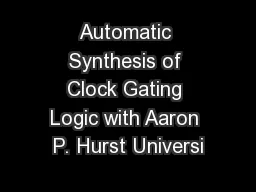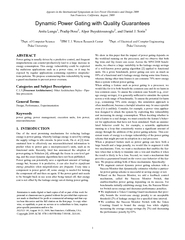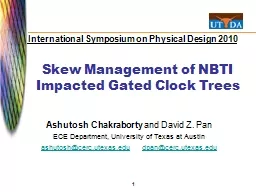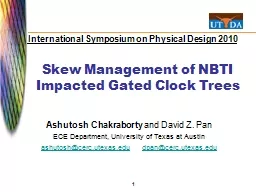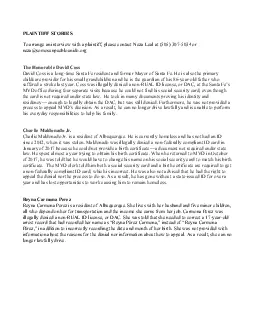PDF-Automatic Synthesis of Clock Gating Logic with Aaron P. Hurst Universi
Author : test | Published Date : 2016-04-18
LOCK GATING Clock gating involves the insertion of conditions on the propagation of a clock to one or more registers in the design By limiting any unnecessary switching
Presentation Embed Code
Download Presentation
Download Presentation The PPT/PDF document "Automatic Synthesis of Clock Gating Logi..." is the property of its rightful owner. Permission is granted to download and print the materials on this website for personal, non-commercial use only, and to display it on your personal computer provided you do not modify the materials and that you retain all copyright notices contained in the materials. By downloading content from our website, you accept the terms of this agreement.
Automatic Synthesis of Clock Gating Logic with Aaron P. Hurst Universi: Transcript
Download Rules Of Document
"Automatic Synthesis of Clock Gating Logic with Aaron P. Hurst Universi"The content belongs to its owner. You may download and print it for personal use, without modification, and keep all copyright notices. By downloading, you agree to these terms.
Related Documents

